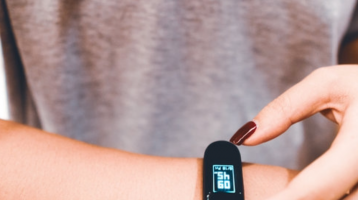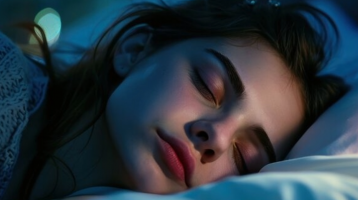Chronobiology works effectively through a combination of the optimal substance, the exact dosage needed, a new understanding of the complex relationships involved, and the “sparking” or activating time point. The most important criteria determining the effect achieved by a perfectly timed application are: What is most effective when taken in the morning? What does the body need in the evening? Which substances have a mutually-potentiating effect? Which substances curb or distort the desired effect?
Today we know that many of the most popular and successful therapies can be even further optimized. Many substances may not have reached the target organ at the right time of day or in the best pharmaceutical form. Chronotherapeutic preparations take into account the effect of therapeutic influences in accordance with the body’s inner clock.
Time Does Not Heal All Wounds
External and internal clocks control our physical, mental, and emotional functions without the need for us to interfere. The more intelligently we attune our life to these rhythms, the greater the benefit we are able to draw from them. Whether it is the oral mucosa or the liver, each physiological system has its own biological rhythm. This knowledge is of particular importance for disease and healing.
Every ailment – such as asthma, arthritis, hypertension, depression, heart attacks, stomach ulcers, sleeping problems, cerebral metabolic disturbances and others – has its own phases. The chronobiological factor of the active ingredients that are used in disease prevention or treatment is of crucial importance. To date, we may only divine a small fraction of the secrets underlying these substances. But a number of important substances are already available as a chronobiologically meaningful formula, scientifically tested and proven. Initially, chronobiologists were being laughed at. Today, their science is an acknowledged branch of research which investigates the interconnections of body, mind, and time. You may be in for quite a surprise!
The most important conclusion drawn from a chronobiological viewpoint is that we possess a whole control package of genetically determined internal “time regulators”. Most importantly, our body follows an internal 24-hour cycle. Hormonal release ultimately depends on the impulses of our inner clocks.
Under the control of our brain, 150 messenger substances circulating in the blood inform our organs about the current situation and prescribe specific consequences. These hormones have a boosting as well as a curbing effect. Our body temperature decreases during sleep, our blood pressure rises as we wake up–and so forth.These rhythms repeat every 24 hours, day after day, night after night. Scientists therefore speak of a “circadian” rhythm. This term comes from the Latin “circa”, meaning “around”, and “dies”, meaning “day”. The shortest up-and-down cycle is measured in the brain waves: fractions of milliseconds. The longest daily rhythms–such as hunger or need for sleep–extend over many hours.
In every single moment, chronobiology transforms the actions inside our organs into a unique and distinctive spectacle. An hour later, nothing remains as it was an hour ago. It seems that with age, some of our inner clocks are ticking more slowly while others are ticking faster. They tend to go out of tune, and some of them stop ticking altogether over the years. Organs begin to develop their own rhythm and disturbances occur. If they remain untreated, diseases may develop.
Science distinguishes around 80 illnesses which are all deemed sleep-related. This is exactly the goal which chronopharmacology pursues: the right formulation at the right time. The current objective is to identify a circadian component in an increasing number of diseases or physical dysfunctions. This results in surprising options of treatment–to the point, more effective and with fewer side effects. Chronobiological medicines or food supplements “recalibrate” our inner time regulators.
Light and Darkness Control How Our Organs Function
The light-darkness factor continuously adjusts our everyday functions to a 24-hour rhythm. Inside our body, its information is converted into a signaling hormone called melatonin. The latter already completes a multitude of tasks by daylight. Around 11 pm, there is usually a sudden surge in melatonin levels to between eight and ten times the normal value. This is a signal for many organs to slow down their activity and regenerate themselves. Many elderly people, however, have largely lost this nocturnal melatonin surge. Many rhythms–including sleep, blood pressure, body temperature and hormones–remain uncontrolled. In these instances, a smart form of chronobiological support is needed. Exciting recent studies have come to valuable conclusions. Researchers are beginning to understand at what hour tumor cells tend to divide. Tumor cells are controlled by time regulators that differ from those of healthy cells.
It is therefore of vital importance that therapeutic cytotoxins be introduced into the target organ at a time when their impact on tumor growth is higher, and when their effect is less detrimental to the remaining cells. Chronopharmacology, the search for therapeutic measures which are in harmony with our inner clocks, is currently the most fascinating area of medical research. We are gradually beginning to understand more and more diseases as rhythm disorders. This is the first step toward the principles of chronobiology.
The Intelligence of Our Inner Clock
Each cell produces highly-specific substances, such as the building blocks of amino acids. Once the desirable concentration is reached, production stops. Enzymes decompose the substances within hours. A new cycle begins. Certain genes, which are also referred to as “clock genes”, act as on/off switches for these processes. They can be found in nearly any type of human tissue and their impact is incredibly multifaceted, sophisticated and smart.
All parts of the human body have receptors that take up the information of messenger substances and neuronal stimuli. Their sensitivity is controlled by the “clock genes.” This also applies to the effect of vitamins, trace elements, and other biologically effective substances, including medicines.The main switch is located in the diencephalon, a central part of the brain composed of two structures. The diencephalon receives messages from special photocells located in the retina. These sensors, which have been decoded only recently, do not recognize objects or colors, but the times of the day, the ambient atmosphere, and the seasons. They are the starting point of a mechanism of action, which in its entirety may be described as a control room where all inner clocks are set. This control room transfers the change between daytime and nighttime from the world outside to innumerable rhythms in our body and attunes them to and among each other. Light is a powerful pulse generator. Whether a person survives a heart attack may depend on the sun’s rays that shine through the window of the intensive care unit. Beds in the northern wing of a hospital are mysteriously associated with a higher mortality rate.




